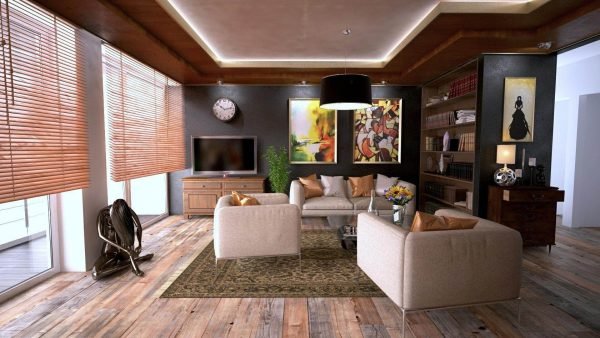When it comes to tackling large-scale DIY projects, having the right materials is essential. Whether you’re building a custom piece of furniture or constructing a backyard shed, the materials you choose will impact the durability and functionality of your project.
In this article, you’ll explore six different materials that can be used for large-scale DIY projects. By understanding the unique properties and applications of each material, you’ll be better equipped to select the right materials for your next project.
Table of Contents
Wood
Wood is a versatile material that is commonly used in large-scale DIY projects. It is strong, durable, and can be easily shaped and manipulated. There are various types of wood available, each with its own characteristics and uses. Softwoods like pine and cedar are ideal for outdoor projects such as decks and fences, as they are resistant to rot and decay. Hardwoods like oak and maple are better suited for indoor projects, including furniture and cabinetry. When working with wood, be sure to choose the appropriate grade and thickness for your project to ensure its longevity.
Metals
Metals are another popular choice for large-scale DIY projects. They offer strength, durability, and a sleek, modern aesthetic. Steel is one of the most common metals used in construction, thanks to its high tensile strength and resistance to corrosion. Aluminum is lightweight and easy to work with, making it an excellent choice for projects that require mobility or flexibility. When working with metals, it’s important to consider factors such as weight, strength, and cost to ensure that you select the right material for your project. Therefore, you must order your metals from reliable and reputable metal suppliers.
Plastic
Plastic is a versatile material that is widely used in DIY projects due to its affordability and durability. It comes in a variety of forms, including sheets, rods, and tubes, making it easy to work with. One of the main advantages of plastic is its resistance to moisture, which makes it suitable for outdoor applications. PVC, for example, is commonly used for plumbing and electrical projects, as it is lightweight and resistant to corrosion. Acrylonitrile Butadiene Styrene (ABS) is another popular choice for its impact resistance and high strength-to-weight ratio. When using plastic, be sure to consider factors such as temperature resistance and UV stability to ensure its suitability for your project.
Melamine
Melamine is a synthetic material that is commonly used in DIY projects. It is made by combining melamine resin with wood particles, creating a strong and durable material. Melamine is often used as a surface material for cabinets, shelves, and countertops due to its resistance to scratches, stains, and heat. It is available in a wide range of colors and patterns, allowing for endless design possibilities. When using melamine, it’s important to handle it with care and use proper safety precautions, as it can release toxic fumes when cut or burned.
Acrylic
Acrylic, also known as plexiglass, is a transparent material. It is lightweight, shatter-resistant, and has excellent optical clarity. Acrylic is often used for applications that require visibility and impact resistance, such as windows, skylights, and protective barriers. It is also available in a variety of colors and can be easily shaped and molded. When working with acrylic, it’s important to use the right tools and techniques to prevent cracking or chipping. Additionally, it’s important to clean and maintain acrylic properly to preserve its clarity and appearance.
Glass
Glass is a classic material. It offers a timeless elegance and can be used in a variety of applications, from windows and doors to tabletops and mirrors. Glass is available in different types, including tempered glass, laminated glass, and stained glass, each with its own unique properties and uses. Tempered glass, for example, is stronger and more resistant to breakage, making it suitable for safety applications. Laminated glass is designed to hold together when shattered, providing added security. Stained glass is known for its decorative appeal and is often used in artistic projects. When working with glass, it’s important to handle it with care and take proper safety precautions, as it can be fragile and cause injury if mishandled.
Conclusion
Choosing the right materials for your large-scale DIY projects is crucial for their success and longevity. Wood, metals, plastic, melamine, acrylic, and glass all offer unique properties and applications that can enhance the functionality and aesthetics of your projects. By understanding the characteristics of each material and considering factors such as strength, durability, and cost, you’ll be able to select the materials that best meet your project’s requirements.





